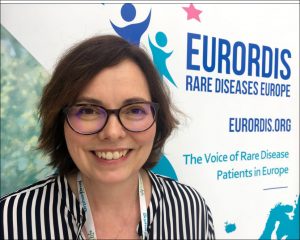#ECRD2018 – Patient Access and Collaboration Focus of Eurordis Meeting May 10-12

Panoramic view of Vienna. (Photo by Larry Luxner)
At least 800 people representing some 45 countries are soon expected to gather in Austria’s capital city, Vienna, for ECRD 2018, the 9th European Conference on Rare Diseases and Orphan Products.
The May 10-12 meeting is sponsored by Eurordis, the Paris-based group that defines itself as a “patient-driven alliance” of rare disease organizations, and will focus on “collaborative strategies” that best hold promise to “leave no-one behind.”
Bionews Services — publisher of this website — plans to cover the conference from Vienna.
Panelists will discuss a range of topics based on six themes: breakthrough medicines on the horizon, quality of life, the digital patient, structuring the research and diagnosis landscape, economic perspectives in rare diseases, and global rare equity.
The meeting also features speeches and keynote addresses by Terkel Andersen, the group’s president; Beate Hartinger-Klein, Austria’s federal minister of health and social affairs; and Martin Seychell, deputy director-general for health and food safety of the European Commission, among others.
It follows Eurordis’ “Breaking the Access Deadlock to Leave No One Behind,” a position paper on the challenge of making new and emerging therapies accessible to all who need them, published in January. An estimated 30 million Europeans suffer from rare diseases, which the 28-member European Union defines as any serious condition affecting fewer than one in 2,000 people.
Jill Bonjean, the group’s corporate relations director, spoke to Bionews during last week’s World Orphan Drug Congress USA in Oxon Hill, Maryland.
“Access, of course, is a very key issue. Our goal is to have three to five times more new rare disease therapies approved per year, three to five times cheaper than today, by 2025,” Bonjean said. “We know that’s imprecise, but this is what we’re looking for.
“We want to make sure that, with the potential of all this tremendous science that is coming, patients will actually get access to these drugs,” she added.
According to the Eurordis paper, access to expensive medicines for rare diseases has become more difficult for reasons that include:
- Economic stagnation since Europe’s 2008 financial crisis, and its consequence on the labor market and fiscal revenues, which means less money available for social programs and institutions
- Europe’s aging population, which increases the demand for care
- The organization of healthcare systems, which must be revisited and adapted to today’s challenges
- The rising cost of new therapies, all the way from the lab to marketing approval, and
- The advent of innovative treatments for widespread conditions, marketed by manufacturers at prices higher than ever before
The paper notes that 143 therapies have been approved since passage of the 1999 EU Regulation on Orphan Medicinal Products; 97 of them still hold orphan status after their 10-year period of market exclusivity. Yet, it adds, “our daily experience provides countless examples of situations when the price of a new orphan medicine proves to be the stumbling block on which manufacturers and payers fail to agree, with potentially dramatic consequences for patients in need of access to therapies.”
Bonjean said half of those likely to attend the conference — which takes place at the Messe Wien Congress Center — will be patients and patient advocates. Another 25 percent will be pharmaceutical industry executives, and the remaining 25 percent will be researchers, politicians, journalists, and others.
“When Eurordis came into being 20 years ago, people had already heard of cystic fibrosis or hemophilia, but most rare diseases were completely invisible,” Bonjean said. “Creating this identity of a rare disease community allowed more diseases to be better known, like Angelman or Rett syndrome.”
Eurordis operates on an annual budget of about €5 million (about $6 million) and employs 40 people in Paris, as well as a few staffers at EU headquarters in Brussels and at a smaller office in Barcelona, Spain. About a quarter of that budget comes from EU grants, another quarter from the pharmaceutical industry, and most of the rest from member organizations.
“Another key issue for us is to involve patients in research throughout the entire process, in a way that puts patients at the center of it,” Bonjean said.
On May 10, before the general conference gets underway the following day, Rare Diseases International (RDI) — a global alliance that includes Eurordis as well as the U.S.-based National Organization for Rare Disorders, the Canadian Organization for Rare Disorders, and another 48 patient advocacy groups from Australia, Brazil, China, India, Japan, Russia, South Africa and a dozen other countries — will hold its annual meeting at the same place.
That meeting, which is open to both members and non-members, will focus on RDI’s efforts to put rare diseases on the United Nations’ 2030 Sustainable Development Agenda.








